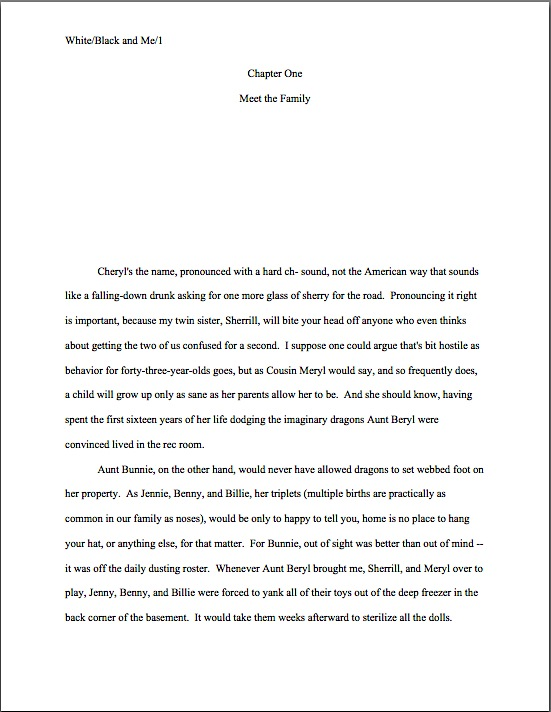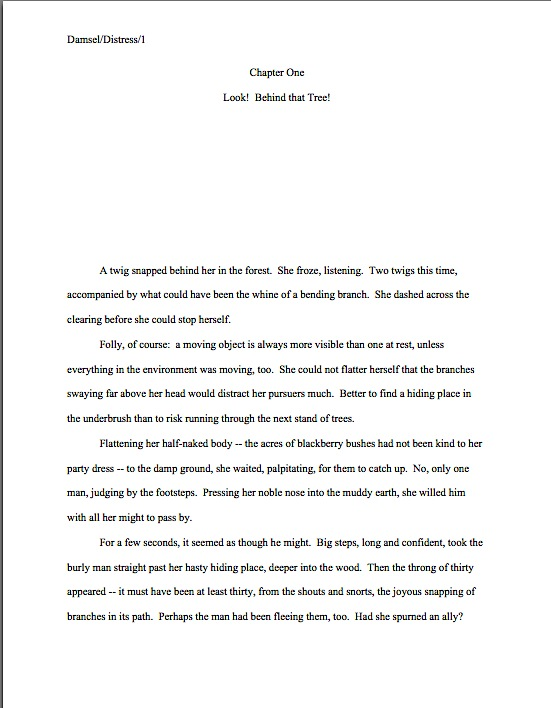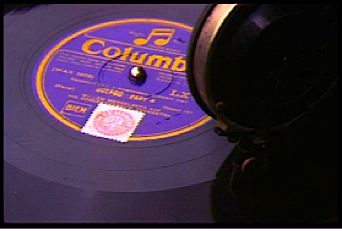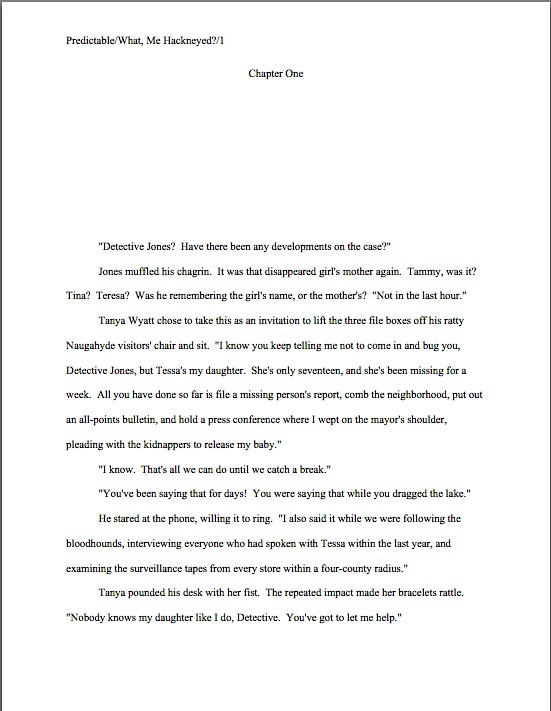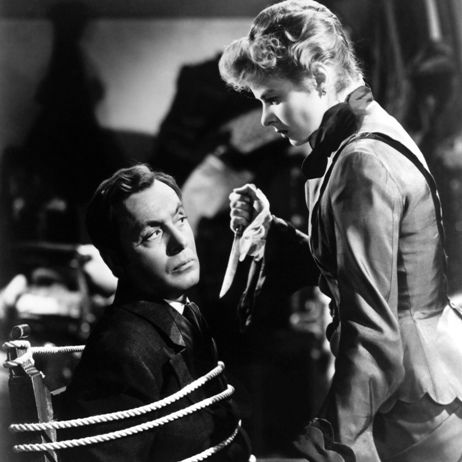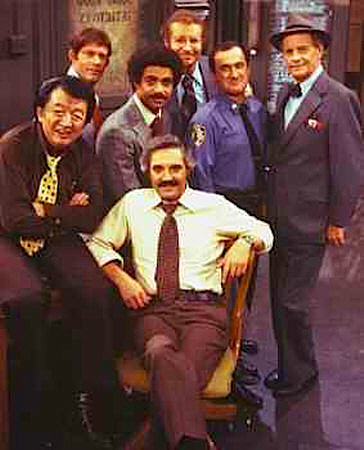Happy Independence Day, campers!
Normally, I would open with a few remarks on the occasion — observing, perhaps, that the actual vote on independence in 1776 occurred on July 2, not July 4 — but given that I actually intended to post news about the summer’s second Author! Author! writing competition a good a week and a half ago, who am I to quibble about dates? Just because the nastiest head cold ever to visit a North American intervened between the announcement of our first literary contest of the season, aimed at adult writers and writers for the adult market, and what I had planned as the next day’s revelation of the rules for a competition devoted exclusively to young writers and those that write YA doesn’t mean that I should equivocate for a few more seconds now.
Except that I should say a few words about today’s guest blogger — and, not entirely coincidentally, the author that is going to be graciously giving away some copies of the charming middle-grade reader novel you see above. Since her book’s protagonist is in fact a writer who is herself very young when the story begins, young Marie has inspired me to create a contest that not only rewards good writing in YA, but great writing by writers currently in middle school and high school.
Well might you champ at the bit. Trust me, though, today’s guest blogger is here to help you polish up the writing skills you will want to have bright and shiny before you construct a contest entry.
Continuing what would have been a logical progression to self-evident to require explanation had my sinuses permitted me to post these two contest announcements back-to-back, I asked today’s guest, Stacy Demoran Allbritton, author of the recently-released The Diary of Marie Landry, Acadian Exile, to share her thoughts on how to write well about food in fiction. Not just in any fiction, mind you: in prose intended for young readers.
I see some of you purists scrunching up your noses, do I not? “But Anne,” you cry, “isn’t good, showing-not-telling writing pretty much the same, regardless of the intended audience?”
Heavens, no, campers. Good writing takes its target readership into account, always.
And before anyone wrinkles so much as a single proboscis at me, let me hasten to add: no, that’s not sacrificing art to market concerns. It’s simply good writing courtesy to craft one’s novel in such a way that the reader will enjoy it.
While being familiar with the conventions and overall vocabulary expectations of one’s chosen book category is, of course, one of the first steps a writer serious about treating potential readers politely is to familiarize herself with what’s currently being published for that readership. (Conveniently, that also happens to be excellent marketing strategy, too.) For all stripes of YA, though, writers also have to be extremely sensitive to presenting age-appropriate vocabulary and situations.
Which is precisely why I asked Stacy to blog on the subject: she has taken some quite dark historical subject matter and transformed it into a debut novel I was completely comfortable giving my 10-year-old neighbor. That’s quite a trick. Take a gander at the publisher’s blurb:
During the Great Upheaval of 1755, the British forced the Acadians to leave their homes in the Canadian provinces. After having lived in exile in Maryland for ten years, fourteen-year-old Marie Landry and her family prepare to join a mass exodus to Louisiana. In her diary, Marie describes the Acadians’ journey to Louisiana while simultaneously including the details of their removal from Acadia ten years earlier. This historically accurate account of Louisiana’s Cajuns depicts tales of hardship and friendship, anguish and hope. Because of their perseverance and faith, Marie and her loved ones are able to survive and find happiness in Louisiana. Illustrations enhance this engaging portrayal of human strength.
An intriguing bit of American and Canadian history to tackle for a young readership, isn’t it? Stacy does it both sensitively and surprisingly unblinkingly. I love it when YA authors respect their youthful readers’ intelligence enough not to sugarcoat tough reality.
She also did something quite clever on the vocabulary front: although the writing overall is age-appropriate, she peppered the manuscript with slightly higher-level vocabulary — and added a glossary of those terms to the back. I wish writers for the young would do this more often; one does not always have a dictionary handy at any age, after all.
The other reason that I blandished Stacy into writing on this particular topic is that her novel includes some actual recipes. Since I know that many of you that write about food in fiction have at least toyed with the concept of writing a cookbook, I thought it might be both fun and useful to ask her to show you the same recipe formatted to appear in a nonfiction manuscript and to show how she might write about the resulting foodstuff for a young readership.
Why might that particular distinction come in handy? Glad you asked. Once again, in the fine tradition of the Author! Author! Awards for Expressive Excellence, then, and as part of my ongoing quest to provide good writers with much-needed Eye-Catching Query Letter Candy (which, let’s face it, is harder for young writers to accumulate), I am proud to announce:
The Make Us Want to Eat It Literary Competition of 2012
As I mentioned when I announced the previous contest for adult writing, although people experience life via all of their senses — sight, sound, taste, smell, touch — many, many of the manuscripts those of us who read them for a living see on a daily basis seem to assume that characters can only see and hear. Or that readers expect to know nothing about a character’s sensations except what an actor might be able to convey to us if we saw him playing that character on T.V.
But you’re a better writer than that, aren’t you? And you’re certainly a better reader.
Because I’m pretty confident that my readers are good at writing about what it’s like to be alive, I’m calling for young writers and adults that write for young readers to enter short scenes — anywhere from 2 to 8 pages in length — that present food in a manner that incorporates more than two senses.
Here’s the catch: the scene can’t take place in a kitchen — or at a dining table.
Why? Because I’d love to see you exercise your creativity, that’s why. That’s my idea of a proper reader-oriented spectator sport.
In order to give young writers more freedom to stretch those creative limbs, you may enter either fiction or nonfiction. (Sorry, adult writers: you may enter only YA fiction. You can always enter your memoir in this summer’s adult contest ) If you are entering memoir and don’t want to use your real name, it’s fine to use a fake one; just make sure that you let us know, so we announce the right name when you win.
Either way, no profanity, please — and please have all of your characters fully clothed. I want to keep this site accessible for young writers whose parents have set up content filters on their computers. So if you wouldn’t want your parents to find a YouTube video of you doing something your characters do, give it a pass in the entry, okay?
Winners will not only receive fabulous prizes (hold your horses; we’re getting to those), but may have their scenes and accompanying synopses both published and critiqued in a post here at Author! Author! for all the world to see and admire. And, if you’re a student, we’re going to recognize the teacher you feel has helped you most with your writing as well.
The grand prize winner in each category will receive a half-hour Mini Consult in order to discuss any aspect of writing. That means I will read up to 20 pages of your writing — a query? A synopsis? The opening pages of the manuscript you’ve been writing? — and call or Skype you in order to have a lovely, long talk about it. I’m also going to post your winning entry here on Author! Author! and tell everyone you know just how terrific your writing is.
First and second place winners will have their entries posted and critiqued on this blog.
Third place winners will receive copies of The Diary of Marie Landry, Acadian Exile
All winners will also be asked to nominate the teacher that they feel helped them most in their quest to become a writer. Choose carefully: if the nominated teachers agree, I shall posting their names, a short bio, and a photograph here at Author! Author!, thanking them publicly for having done such a good job with these students. The judges and I shall also be putting our heads together on a pretty fabulous certificate of appreciation, recognizing the teacher as one of the great encouragers of future authors.
And yes, I do mean all winners, even in the adult writers of YA category. You think their favorite teachers shouldn’t be recognized? I couldn’t disagree more.
Hadn’t I mentioned that my mother was not only an editor, but also my junior high school librarian? Or that my completely fabulous seventh-grade English teacher is still one of my heroes?
Here are the specific steps required to win. Do read them all carefully, and post any questions you may have. And if you would like to see me walk through each and every requirement of contest entry, showing you step-by-step visual examples, all you need to is click here.
1. Write or select a scene no more than eight pages in length from your manuscript or manuscript-in-progress that best shows off a sense-based description of food.
How will you figure length? Glad you asked.
2. Pages must be double-spaced in 12-point Times, Times New Roman, or Courier., with one-inch margins and a slug line at the top containing your last name/title/page #.
All pages must be numbered, in accordance with standard format for book manuscripts. You’ll find examples of it in the guest post below. (And don’t worry — next week, I shall be showing you precisely what standard format would look like in a contest entry.)
3. All entries must be in English.
Whether you choose to write in American English, Canadian English, or U.K. English, however, is entirely up to you. Just let us know which — and make sure it’s spelled correctly.
4. The scene must center on food, but it cannot take place in a kitchen or at a dining table.
That should sound familiar, right?
5. The scene must include depictions of at least two human senses, but cannot include any profanity or references to sexual activity.
No exceptions. Humans have a lot of other senses. Remember, too, that the judges will be looking for a variety of senses to be addressed in the scene.
6. Polish your scene to a high gloss and save it as a Word document, as a .doc file
Only .doc entries in Word will be accepted — not TextEdit, PDF, or any other formats, please. Please title the Word file your name and the abbreviated title of your book (Austen Pride & Prejudice), not just as contest entry or the ever-popular Anne Mini contest (The last time I ran a contest like this, I received 42 entries with one of the other file name.)
7. In a separate Word document, give your name, state (or country, if entering from outside the U.S.), age, name of your school (if you are enrolled in one), and e-mail address, as well as the category you are entering.
Telling the judges the category will save a lot of confusion. The possible categories are:
Category I: Fiction on food by writers currently attending or about to enroll in middle school
Category II: Nonfiction/Memoir on food by writers currently attending or about to enroll in middle school
Category III: Fiction on food by writers currently attending or about to enroll in high school
Category IV: Nonfiction/Memoir on food by writers currently attending or about to enroll in high school
Category V: YA fiction on food by adult writers
If you are entering Category V, please see Rules #8 and #9. Everyone else can skip to Rule #10.
8. If you are entering in the adult writer category, on the same page as the material in Rule #7, please include a 1-paragraph explanation of how the scene you are entering fits into the overall story of the book.
This is the only chance you’re going to get to set up the scene for the judges, so make it count!
9. If you are entering in the adult writer category, on the second page of the document described in #7, please include a synopsis of no more than 1 page, giving the judges an overview of the book’s premise, its main characters, and its central conflict.
Again, this synopsis must be in standard format. If you are unfamiliar with either standard format or how to write a 1-page synopsis, you will find explanations (along with examples) under the HOW TO FORMAT A BOOK MANUSCRIPT and HOW TO WRITE A 1-PAGE SYNOPSIS categories on the archive list located on the right-hand side of this page.
10. Make sure that both documents are properly formatted: precisely as they would appear in a manuscript submission.
Part of the goal here is to help young writers learn how to submit their work professionally. If it is not double-spaced, in 12-point type, and featuring a slug line (Author’s last name/book title/page #) in each page’s header, the judges will not consider the entry.
11. Attach both Word documents to an e-mail.
Please include FOOD! and the category number in the subject line. Please also mention the category In the body of the e-mail. (It makes it easier to process the entries.)
Make sure to say who you are, too, so we don’t get entries mixed up. It’s also a nice touch to say something pleasant (like “Howdy, Anne!”) in the e-mail itself. Just a nice habit for a writer to have acquired before starting to work with an agent.
12. E-mail the whole shebang to contest(at)annemini(dot)com by Sunday, September 30, 2012, at midnight in your time zone. If you are entering more than one category, please submit each entry in a separate e-mail.
Do I need to explain that the (at) should be typed as @, or that (dot) should appear as a period? Nah, probably not; you all understand why reasonable people don’t post their e-mail addresses online.
13. Because winners will also be awarded life-long bragging rights and coveted ECQLC , the judges reserve the right to award as many (or as few) prizes as the quality and quantity of the entry pool in any given category warrants.
That’s a fancy way of saying that if we don’t receive enough wonderful entries in one of the categories, we may not give an award for it. So you might want to urge your friends to enter.
Those are the rules! Please follow them closely. As I said, I shall be writing a post next week that goes over them in detail, with visual examples, but in the meantime, you might to bookmark this page. As well as “the one on which I provide examples of how to follow each and every rule. (Oh, you thought I would leave my young readers to guess? How little you know me!)
And seriously, please ask if anything at all seems puzzling. It’s actually very helpful to know what could use more explanation.
And do read the guest post that follows. As I said above, I think you’re going to find Stacy’s insights into food writing very thought-provoking. You might even want to ask her some questions in the comments.
One last word before we begin: my apologies about the blurriness of the page shots here; I had asked Stacy to show you all how to format a recipe in a manuscript — because, presumably, some of you would-be cookbook writers would like to know — but the shots she sent me were exceedingly blurry. No one’s fault, as nearly as I can tell. I’ve fixed them the best I can, but if you would like to see the details better, I would suggest holding down the COMMAND key and pressing the + key repeatedly to enlarge the image.
Take it away, Stacy!
When you think back on a Christmas dinner, a birthday party, or a crawfish boil, the festivities were centered on food, but the experience was so much more than food. They involved the people who shared that food with you; the circumstances in which you ate that food; where you were, and when.
That is what makes writing about food in fiction so flavorful — the story, the emotion, the people surrounding the fare.
The use of food and recipes in fiction can be a tool by which you define and develop your characters, and by which you move your plot forward. Food can also expose your readers to a different world. So, though the scene might be focused on dining, it is what the food brings to the table, so to speak, that opens the window to an entirely new dimension — both for your character and for your readers.
In my novel for middle-grade readers, The Diary of Marie Landry, Acadian Exile, the multi-layered capabilities of food propel the story and reveal character. For example, on the surface, the cook Bernardine teaches Marie some Creole recipes, but more than learning about the food itself, Marie is able to learn about another life and another way of life. Through these recipes, she is able to share a piece of herself as well.
Let me give you some very concrete suggestions on how to use food in fiction to achieve such goals.
1. Use memory
I think almost everyone recognizes how memories can resurface simply from the taste of something long-since forgotten, or from a smell that morphs us back to another time and place. The most notable example I can give (from Remembrance of Things Past) is Marcel Proust’s biting into a petite Madeleine cake after he had dunked it into a cup of tea — the way he remembered doing at his aunt’s house when he was a child. Memories flood the forefront of his mind based on that simple act of tasting a tea-soaked cake.
Anne here: the passage to which Stacy refers is so wonderful that I cannot resist breaking in to share it with you, at least in part. If you’re not in a frantically Proustian frame of mind, feel free to skip past everything in boldface: Stacy’s guest blog resumes at the first plain text.
“I put down my cup and examine my own mind. It is for it to discover the truth. But how? What an abyss of uncertainty whenever the mind feels that some part of it has strayed beyond its own borders; when it, the seeker, is at once the dark region through which it must go seeking, where all its equipment will avail it nothing. Seek? More than that: create. It is face to face with something which does not so far exist, to which it alone can give reality and substance, which it alone can bring into the light of day.
“And I begin again to ask myself what it could have been, this unremembered state which brought with it no logical proof of its existence, but only the sense that it was a happy, that it was a real state in whose presence other states of consciousness melted and vanished. I decide to attempt to make it reappear. I retrace my thoughts to the moment at which I drank the first spoonful of tea. I find again the same state, illumined by no fresh light. I compel my mind to make one further effort, to follow and recapture once again the fleeting sensation. And that nothing may interrupt it in its course I shut out every obstacle, every extraneous idea, I stop my ears and inhibit all attention to the sounds which come from the next room. And then, feeling that my mind is growing fatigued without having any success to report, I compel it for a change to enjoy that distraction which I have just denied it, to think of other things, to rest and refresh itself before the supreme attempt. And then for the second time I clear an empty space in front of it. I place in position before my mind’s eye the still recent taste of that first mouthful, and I feel something start within me, something that leaves its resting-place and attempts to rise, something that has been embedded like an anchor at a great depth; I do not know yet what it is, but I can feel it mounting slowly; I can measure the resistance, I can hear the echo of great spaces traversed.
“Undoubtedly what is thus palpitating in the depths of my being must be the image, the visual memory which, being linked to that taste, has tried to follow it into my conscious mind. But its struggles are too far off, too much confused; scarcely can I perceive the colorless reflection in which are blended the uncapturable whirling medley of radiant hues, and I cannot distinguish its form, cannot invite it, as the one possible interpreter, to translate to me the evidence of its contemporary, its inseparable paramour, the taste of cake soaked in tea; cannot ask it to inform me what special circumstance is in question, of what period in my past life.
“Will it ultimately reach the clear surface of my consciousness, this memory, this old, dead moment which the magnetism of an identical moment has travelled so far to importune, to disturb, to raise up out of the very depths of my being? I cannot tell. Now that I feel nothing, it has stopped, has perhaps gone down again into its darkness, from which who can say whether it will ever rise? Ten times over I must essay the task, must lean down over the abyss. And each time the natural laziness which deters us from every difficult enterprise, every work of importance, has urged me to leave the thing alone, to drink my tea and to think merely of the worries of to-day and of my hopes for to-morrow, which let themselves be pondered over without effort or distress of mind.
“And suddenly the memory returns. The taste was that of the little crumb of madeleine which on Sunday mornings at Combray (because on those mornings I did not go out before church-time), when I went to say good day to her in her bedroom, my aunt L?onie used to give me, dipping it first in her own cup of real or of lime-flower tea. The sight of the little madeleine had recalled nothing to my mind before I tasted it; perhaps because I had so often seen such things in the interval, without tasting them, on the trays in pastry-cooks’ windows, that their image had dissociated itself from those Combray days to take its place among others more recent; perhaps because of those memories, so long abandoned and put out of mind, nothing now survived, everything was scattered; the forms of things, including that of the little scallop-shell of pastry, so richly sensual under its severe, religious folds, were either obliterated or had been so long dormant as to have lost the power of expansion which would have allowed them to resume their place in my consciousness. But when from a long-distant past nothing subsists, after the people are dead, after the things are broken and scattered, still, alone, more fragile, but with more vitality, more unsubstantial, more persistent, more faithful, the smell and taste of things remain poised a long time, like souls, ready to remind us, waiting and hoping for their moment, amid the ruins of all the rest; and bear unfaltering, in the tiny and almost impalpable drop of their essence, the vast structure of recollection.
“And once I had recognized the taste of the crumb of madeleine soaked in her decoction of lime-flowers which my aunt used to give me (although I did not yet know and must long postpone the discovery of why this memory made me so happy) immediately the old grey house upon the street, where her room was, rose up like the scenery of a theatre to attach itself to the little pavilion, opening on to the garden, which had been built out behind it for my parents (the isolated panel which until that moment had been all that I could see); and with the house the town, from morning to night and in all weathers, the Square where I was sent before luncheon, the streets along which I used to run errands, the country roads we took when it was fine. And just as the Japanese amuse themselves by filling a porcelain bowl with water and steeping in it little crumbs of paper which until then are without character or form, but, the moment they become wet, stretch themselves and bend, take on color and distinctive shape, become flowers or houses or people, permanent and recognizable, so in that moment all the flowers in our garden and in M. Swann’s park, and the water-lilies on the Vivonne and the good folk of the village and their little dwellings and the parish church and the whole of Combray and of its surroundings, taking their proper shapes and growing solid, sprang into being, town and gardens alike, from my cup of tea.”
This very phenomenon happened to me as an adult one year at a Christmastime cookie swap. When I bit into a cookie that a colleague had shared, memories of my childhood summers spent with my grandmother in Bay St. Louis, Mississippi demanded my attention. So important were those memories that I never again wanted to forget the taste of that cookie — and everything that I associated with it.
I just had to have that recipe! I’m happy to report that my colleague was not stingy with her recipe, and to this day I still bake that cookie every Christmas.
Paulette Rittenberg, a columnist with The Times Picayune in New Orleans understands the importance of stories connected to recipes: her food column includes the stories inextricably linked to the recipes she publishes. Lucky me, she included my cookie story in her column years ago. Her column will give you many examples of using memories of food to fuel a story.
What recollections do you have that revolve around a particularly meaningful food to you? Ask yourself a series of questions, and listen to your answers.
Where did you first taste it?
With whom?
How old were you?
What did you think of it –- liked it, hated it?
Be as specific as you can, then put the most evocative details into your tale.
As for me, many of my fondest memories go way back to when I learned how to cook the summer I was twelve years old. Thinking that my maternal grandmother was ancient at sixty-two years of age, I figured that time was of the essence — I needed to get those recipes out of her head, and soon!
That’s not entirely true. My biggest motivations for learning to cook were that I loved spending time in the kitchen with her, and I thought that she was the greatest cook on the planet. The lagniappe — the little bit extra — that I got when learning to cook from my grandmother was all those wonderful memories that became fodder for stories.
I so enjoyed cooking with my grandmother that I based Bernardine the Cook on her and turned those memories into scenes in my novel. Cooking was a natural way for my protagonist, Marie, to make a new friend. It was also the catalyst by which she was able to adapt to a new environment, to feel less frightened in unfamiliar surroundings, and to learn new ways of doing things. Food is her path to finding familiarity and acceptance in a new environment, in a different culture.
Using your own memories of food can help reveal your character’s values and personality traits in an oblique manner. How? Take a look at my grandmother’s recipe for drop biscuits — delicious hunks of dough, I assure you — and then, later in this post, I’ll show you how I turn it into a story for young readers.
Quick note from Anne to those of you planning on using this page shot as a guideline for formatting a cookbook manuscript: many publishers prefer that at the submission stage, abbreviations be written out. Do check small publishers’ submission requirements before you send so much as a page; if they do not specify that the standard American measurement abbreviations are acceptable, I would advise writing everything out.
Try to think about the difference between this example and the next as a matter of audience. As a recipe, this page contains all of the elements someone would need to bake this delicious biscuit, right? But novel readers are looking for more than that: they want to feel they are there.
2. Use all five senses
Let’s face it — eating is more than just a gustatory experience. Not only do we taste it: we see food, smell food, enjoy (or not) the texture of food. And when we are in the kitchen, the sounds of preparing and cooking it can entice us. We anticipate the act of eating for more reasons than just filling our bellies.
Every scene with food does not have to include every sense, of course, but you should give your readers more than just a description of what is being served. Let them in on the sensory indulgence that your character is experiencing.
Another way to think of it is allowing the reader to feel what it was like to be in your character’s body at that moment. To take an example from my novel, is Marie’s first experience of seafood gumbo:
[Bernardine] leaned her ample arms on the table as she pushed herself up and said, “Come see. I’ll show you just what gumbo is.” She limped slightly as she shambled over to the hearth. Then she swung the kettle out of the fire and grabbed her paddle without taking her eyes off of the pot. As she stirred the thick soup, steam whirled past my nose, and I unconsciously said, ‘Ummmm,’ and closed my eyes to savor the luscious smell.
Anne here again: sorry to keep interrupting, but since Stacy’s example is taken from a middle-grade fiction work, I do feel compelled to point out that in YA or adult fiction, this passage would be considered a bit skeletal, as food descriptions go. Why? Well, let me ask you: if you had never smelled gumbo before, what specific scents would you think Marie was experiencing in this moment?
Not to criticize Stacy’s choice of example, of course: it’s a great illustration of something that aspiring writers are all too prone to forget, that the prevailing style standards and expectations for one type of fiction are not necessarily what prevail in another. I’m grateful for the opportunity to show that important reality so explicitly. I’ll shut up now.
Eating is a multi-sensory experience, and a universal one to boot, so use what is naturally at your disposal to develop your characters. And I’m not just talking about culinary knowledge. Remember that bare-bones drop biscuit recipe? Here it is again as the opening to a story I’ve entitled Camelia’s Christmas Day Biscuits.
Notice how Camelia’s senses are tickled throughout the experience. And why not consider it an example of how to properly format a manuscript, while we’re at it? (Yes, this is a short story, but for the sake of usefulness, let’s imagine that it’s a novel I plan to submit to an agent.)
3. Use Details
Writing about food is more than just description — it was bland; it was spicy. Where is it? On the table? How did it get there? Who put it there and why?
If you are going to write a recipe into the scene, remember that if it is your character who is conveying the recipe to someone else, you must make sure that the retelling of it on the page is appropriate for the character’s personality, age, gender, etc. A ten-year-old girl would not have the same recollection of baking gingerbread cookies as a world-renowned gourmet chef.
You can propel the plot (and/or teach the lesson) through detailed preparation, consumption, and discussion of a particular dish or recipe. In my novel, for example, I don’t just have Marie and Maman discuss beignets: my readers learn that Marie has a remembrance of them, but she needs Maman’s validation of this memory because she was too young to recall them vividly. She wants to be sure, because she has discovered a recipe that had faded from her family’s daily life because of circumstances beyond their control. She learns that she loved this confection when her family was intact, when life was full of promise for them. For her, poignant emotion is attached to the taste of a doughnut.
But she didn’t understand this until she had a conversation about it with Maman. It is much more believable for Marie — a teenager — to understand her feelings by accident through food than through calculated introspection.
To show you how this dynamic might play out on the manuscript page, let’s take a look at rest of “Camelia’s Christmas Day Biscuits.” As you are reading, ponder what you learn about Camelia and her grandmother through the story’s food details. What is their relationship? How old do you think Camelia is? What kind of man is her father? What, if anything, did she learn here — about herself, about baking, about life?
Did you notice how the answers the questions above were not addressed overtly on the page? Instead, they are revealed to the reader only through details. That’s the essence of showing, not telling.
4. Read!
When it comes to writing about food in fiction (or writing about anything, for that matter), my last piece of practical advice is to read, read, read. Find out what you do and don’t like on the page. Good readers make good writers. And how!
Stacy Demoran Allbritton, a New Orleans native, has always been fascinated by the multi-faceted history of her home state. She holds a B.A. in French and an M.A. in Romance Languages from the University of New Orleans, where she received the 2005 James Whitlow Award for Excellence in Romance Languages. She was a high school French and English teacher in Louisiana until 2009, when she decided to pursue opportunities in writing and travel. The Diary of Marie Landry, Acadian Exile is her first published novel. She is currently working on her second novel in the Louisiana Heritage series. Stacy and her husband divide their time between Monroe, Louisiana and Paris, France. You can visit her on her blog.









